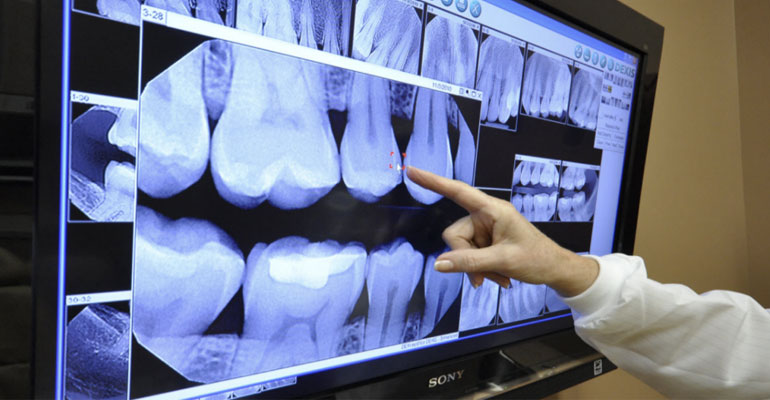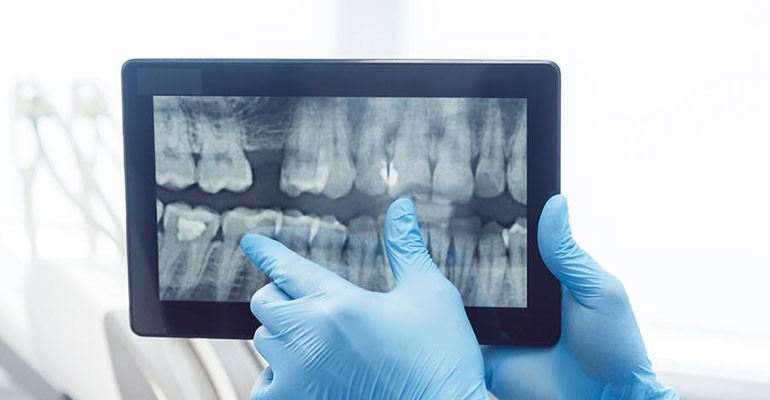X rays (Digital)
Digital dental X-rays, also known as digital radiographs, have revolutionized the field of dentistry by providing a more efficient and advanced way to capture and analyze images of the teeth and surrounding structures. This technology replaces conventional film-based X-rays with digital sensors, offering numerous benefits to both dental practitioners and patients.


Key Advantages:
1.Reduced Radiation Exposure:
Digital X-rays use significantly less radiation compared to traditional film X-rays, making them a safer option for patients. This is particularly beneficial for those who may need frequent X-rays, such as individuals undergoing orthodontic treatment.
2.Quick and Efficient:
Digital X-rays produce images almost instantly, eliminating the need for time-consuming film processing. This allows dentists to assess images quickly and discuss treatment options with patients during the same appointment.
3.Enhanced Image Quality:
Digital technology provides high-resolution images that can be manipulated for better diagnostic accuracy. Dentists can zoom in, adjust contrast, and highlight specific areas, aiding in the detection of dental issues such as cavities, infections, and bone abnormalities.
4.Environmentally Friendly:
Unlike traditional X-ray processes that involve chemical development and disposal of film, digital X-rays are eco-friendly. They eliminate the need for toxic chemicals and reduce the environmental impact associated with film processing.
5.Improved Storage and Retrieval:
Digital X-rays are stored electronically, simplifying record-keeping for both dental practices and patients. This makes it easier to retrieve and share X-ray images when needed for referrals, consultations, or insurance purposes.
Types of Digital Dental X-Rays:
1.Intraoral X-Rays:
Bitewing X-rays: Capture images of the upper and lower teeth in a specific region, showing details of the crowns of the teeth and the height of the supporting bone.Periapical X-rays: Focus on one or two teeth, providing a detailed view of the entire tooth from crown to root.
1.Extraoral X-Rays:
Panoramic X-rays: Offer a broad view of the entire mouth, including the jaws, teeth, and surrounding structures.Cone Beam Computed Tomography (CBCT): Produces three-dimensional images for detailed assessments, especially useful in implant planning and oral surgeries.
Patient Experience:
Patients can expect a comfortable and efficient experience during digital X-ray procedures. The process is quick, and the reduced radiation exposure contributes to a safer imaging environment. Dentists can promptly discuss findings with patients, leading to faster diagnosis and treatment planning.
In conclusion, the transition to digital dental X-rays represents a significant advancement in dental technology. It enhances diagnostic capabilities, improves patient care, and contributes to a more environmentally sustainable dental practice. As technology continues to evolve, digital imaging will likely play an increasingly central role in the future of dentistry.
